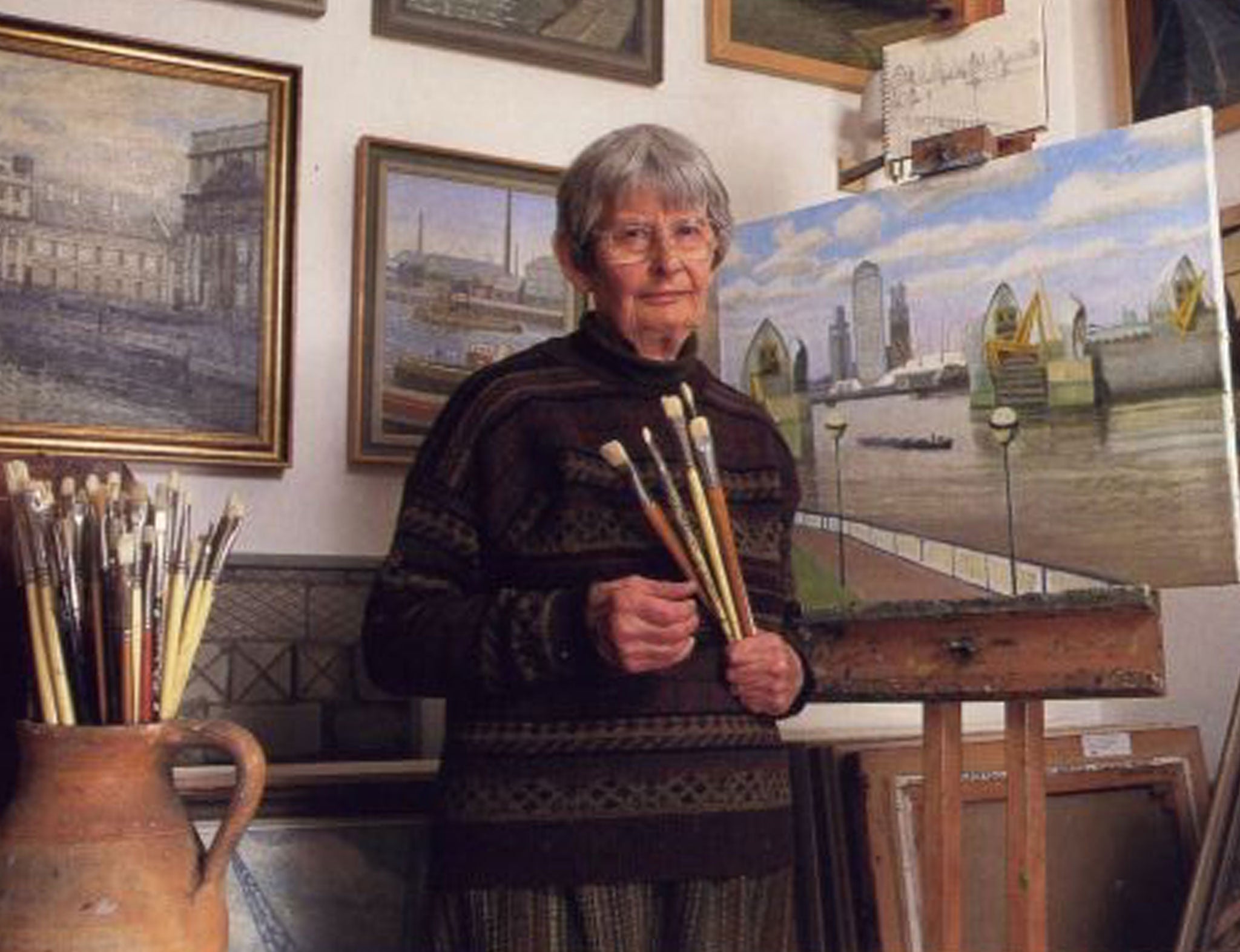Obituary: Anne Christopherson
Artist acclaimed for her images of the Thames

Your support helps us to tell the story
From reproductive rights to climate change to Big Tech, The Independent is on the ground when the story is developing. Whether it's investigating the financials of Elon Musk's pro-Trump PAC or producing our latest documentary, 'The A Word', which shines a light on the American women fighting for reproductive rights, we know how important it is to parse out the facts from the messaging.
At such a critical moment in US history, we need reporters on the ground. Your donation allows us to keep sending journalists to speak to both sides of the story.
The Independent is trusted by Americans across the entire political spectrum. And unlike many other quality news outlets, we choose not to lock Americans out of our reporting and analysis with paywalls. We believe quality journalism should be available to everyone, paid for by those who can afford it.
Your support makes all the difference.Anne Christopherson was celebrated for her evocative paintings of the Thames and Greenwich, a fascinating record of the maritime, industrial and picturesque aspects of this distinctive part of London before change overtook it. In the introduction to her book Greenwich – Time and Tides (2001), she describes a few of her sources of inspiration: “The scrapyard by the Cutty Sark was the subject of three paintings, one with the big claw grab lifting waves of orange and grey scrap from the heap under a yellow sky, another of a ship moored alongside the quay full of odd abstract shapes, and the third framed by the power station jetty with scrap mountains piled against the sky.” She adds: “All this ... is now no more.”
Anne Elizabeth Watson was a quintessential Englishwoman who was born in India in 1921, her father a colonel attached to the Indian Medical Service; she was the oldest of three siblings. Her mother, Ruth Charrington, was a member of the brewing family. Brewers and doctors loomed large in her background but the arts were well represented: her great-grandmother was the artist Joanna Boyce Wells, and there was a family connection with Ralph Vaughan Williams.
When she was seven the Watsons returned to England, to a New Forest village in Hampshire. They lived in a house designed by Edwin Lutyens, Little Hay, with a Gertrude Jekyll garden; the children grew up in idyllic circumstances. Anne, encouraged by her father, developed an interest in nature, in plants and birds, which stayed with her (while she lived in Greenwich, she kept detailed notes about bird movement and migration). Pony-trekking, boating on the Solent and compiling a family magazine all contributed to the felicity of the era.
About to turn 18 when war broke out, she postponed her art-school training and joined the WAAF, finding a niche in the Meteorology Department. This gave her a firm understanding of weather conditions, cloud formations and so on, and enhanced her powers of observation, which stood her in good stead as a painter. She became good at predicting the weather, but because she had signed the Official Secrets Act she remained reluctant to discuss skills acquired during wartime. She was of the stuff of which victory was achieved.
After the war she attended Bournemouth School of Art, and from 1948-50 Goldsmith's. A year at Hornsey completed her training and in 1951 she was became art mistress at Blackheath High School, where she taught for 11 years. In 1958 she married the painter John Christopherson and the couple settled in Greenwich after a four-year interlude in Hampstead. They moved into an idiosyncratic modern house halfway along what was once a steep rural lane and which still contained rustic elements; looking down from their first-floor windows, on the Thames at Greenwich as it curved round the Isle of Dogs, had a tremendous impact on her artistic impulse. She had found her subject matter.
For many years, the couple would set out every Sunday afternoon to walk along the river, equipped with notebooks and pencils. Anne, who was something of a “Plein Air” enthusiast, would then return with easel and paints – and never mind if the wind threatened to blow her canvas away, or if crowds of schoolchildren made an unwelcome audience.
Both Christophersons were, in Degas's phrase, “mad about painting”, and would often sit up half the night discussing art. They amassed a charming and important small collection, mainly 20th-century English and postwar French. Part of it, including a Henry Moore sculpture, has gone to the Tate Modern, and part to Tate St Ives.
The couple embodied a “Festival of Britain” spirit of postwar regeneration and enterprise. Everyone who knew Christopherson – she had a wide circle of friends and acquaintances – was aware of a sparkling intelligence and humour, a stoical disposition and good stamina. Passengers in her dilapidated Mini, driven at high speed with total disregard for the rules of the road, will not forget the experience in a hurry.
During the 1960s and '70s the Christophersons enjoyed many painting holidays in St Ives, and when ill-health obliged Anne to leave Greenwich she moved to a residential home near St Ives. She entertained a stream of visitors, including family members and her godson Robert Gray. But always in her mind was the light on the river, the buildings and small streets of south-east London: “There are grey days when the Thames is choppy, still, misty days with reflections in the water, and sunny spring days with white clouds and little waves breaking into multi-coloured specks, and always the path by the shore.”
Anne Elizabeth Watson, artist: born India 24 September 1921; married 1958 John Christopherson (died 1996); died Portscatho, Cornwall 15 August 2013.
Join our commenting forum
Join thought-provoking conversations, follow other Independent readers and see their replies
Comments